
Not too long after Eric and I moved to the Bay Area (nearly 16 years ago now), I heard about the elephant seals at Año Nuevo State Reserve. Every year in the winter, elephant seals come to the shores of the Peninsula south of San Francisco to bear their babies. I was determined to see them some day, but as access to the site is severely limited by the park service to protect the animals, it took me all these years to make an appropriate reservation. But this year I planned carefully, and was able to schedule a visit to see the seals as part of my birthday celebration.

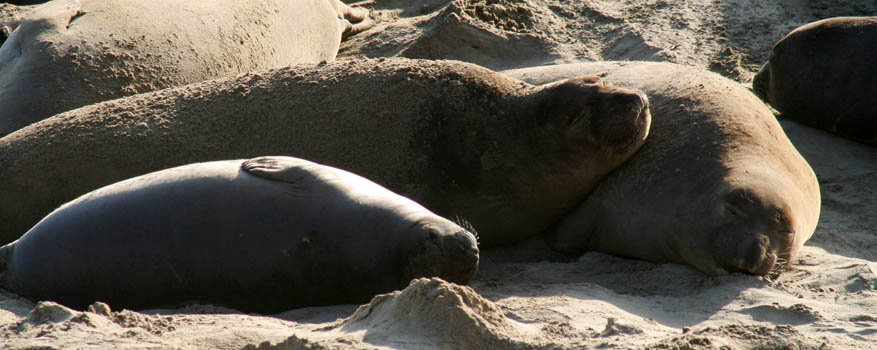
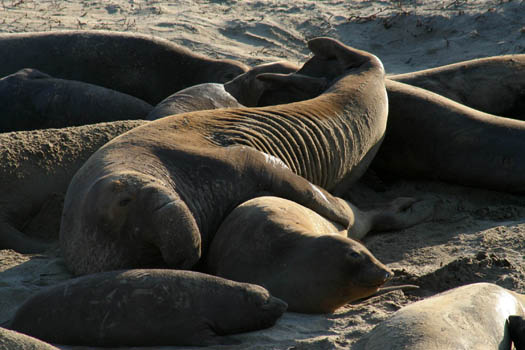
Elephant seals have very unusual reproductive patterns. The males and females spend most of the year apart and eat entirely different diets. The males spend most of the year in Alaska and eat bottom feeders like small sharks. This is ironic, because Great White Sharks are one of the major predators of elephant seals. The females, seemingly much more intelligently, spend most of the year in Hawai'i, eating primarily squid. Once a year, they come together, in only three places in North America, one near San Simeon in southern California, one near San Jose, and one north of San Francisco at Point Reyes, where a new colony is forming. Each female elephant seal will spend only a month with the males, but all of them do not come at exactly the same time, so that elephant seals can be found at Año Nuevo for most of the winter. During this time, neither she nor any of the males eats any food. She comes to the beach, gives birth to one pup (who has a 50% chance of surviving to age one), and has another egg fertilized by a male. Although the gestation period for an elephant seals is only eight months, an entire year passes between fertilization and birth. The females keep their fertilized eggs for four months, and only after that time do they implant them and let them begin to grow.
Female elephant seals live much longer than males, so a colony will have many more females than males. You would think this would be a happy situation for the males, but for most of them, you'd be wrong. For some reason, females organize themselves into harems of 100-200 each. Each harem will be impregnated by only one male! So of more than 100 males who come to Año Nuevo for the annual mating ritual, only about half a dozen will get to mate with females! The rest will just lie there on the beach, lonely and hungry.

Our guide told us a great deal about elephant seal mating rituals. He said that when a male wants to mate with a female, he will approach her, put a fin over her back, and bite her neck.
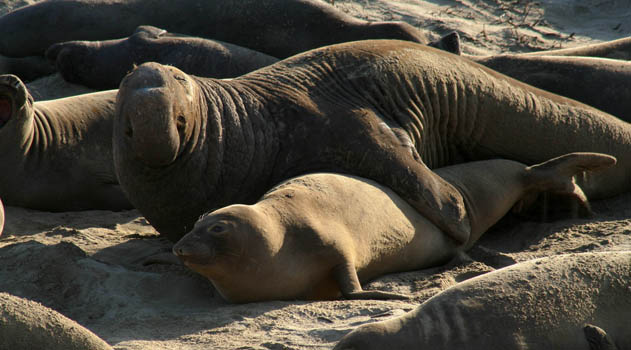
Our guide told us that an unreceptive female would toss sand in the male's face. This is exactly what the female elephant seal did.
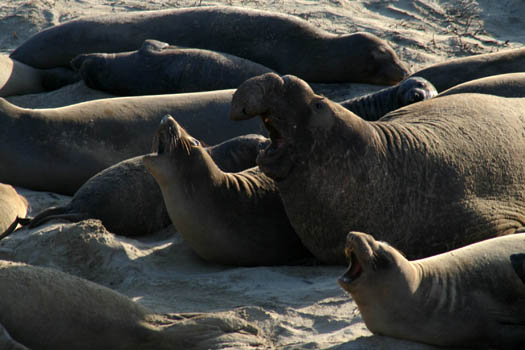

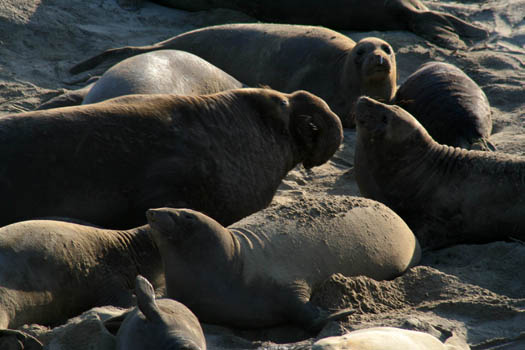
The fact that so few males get to mate seemed very odd to Eric and me. It hardly makes for a great deal of genetic diversity. When we asked our guide about this, we found out that the situation is even worse than it appears. After Europeans came to what is now the western United States, elephant seals were over-hunted, and it was thought that they had been driven to extinction. In the 1850's, however, seven seals suddenly appeared on the shores of Guadalupe, Mexico. The Mexican government excitedly called the US government, since most animal experts at the time were apparently American. Experts from the Smithsonian traveled to Guadalupe, and immediately killed all seven seals and brought the bodies home for examination! Fortunately, however, the seven were only the first wave of a colony, so the species survived 19th century science. The colony had only one male, though, and all of today's North American elephant seals are descended from that single father. How this lack of genetic diversity serves the species remains a mystery.